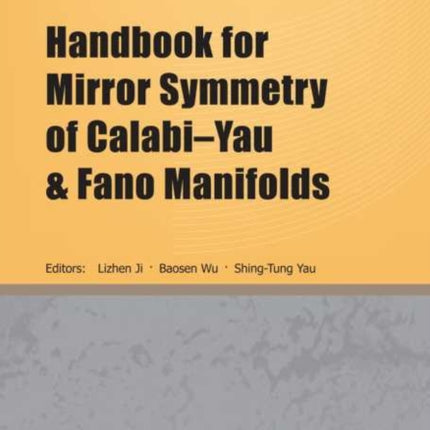Handbook for Mirror Symmetry of Calabi–Yau and Fano Manifolds
£58.43
Includes FREE deliveryUsually despatched within 3 days
Paperback / softback by Lizhen Ji , Baosen Wu
Short Description:
In algebraic geometry and theoretical physics, mirror symmetry refers to the relationship between two Calabi–Yau manifolds which appear very different... Read more
Publisher: International Press of Boston IncPublication Date: 30/10/2020
ISBN13: 9781571463890, 978-1571463890
ISBN10: 1571463895
Number of Pages: 558

